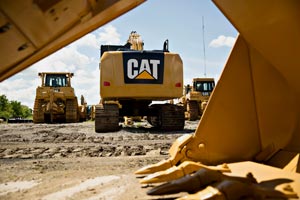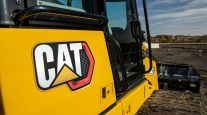More Trouble for Caterpillar as Sales Fall Most in Five Years

For Caterpillar Inc., the commodities rout has yet to hit bottom.
Third-quarter profit fell more than forecast on the lowest sales in five years for the Peoria, Illinois-based company, as plunging commodity prices dimmed demand for mining and energy equipment. Next year’s sales to those industries will drop as much as 10%, Caterpillar said in an Oct. 22 statement.
Slumping crude-oil prices have battered drillers, while a slowdown in China, the biggest consumer of energy and metals, has created a glut of metals, leaving mining customers with idled equipment. Global investment in copper mines will fall to $11.1 billion next year, the lowest since 2007 and less than a third of spending in 2012, according to Citigroup Inc.
“There’s a weak feel to everything here,” Stephen Volkmann, a New York-based analyst at Jefferies, said in an interview. Caterpillar’s energy and transportation segment “is carrying the load here, and the concern is how long that can last.”
Net income fell to 62 cents a share from $1.63 a year earlier, Caterpillar said in the statement. Profit excluding one-time items was 75 cents a share, trailing the 77-cent average of 19 analysts’ estimates. Sales fell 19% to $11 billion, the lowest since the second quarter of 2010 and short of the $11.3 billion average estimate.
Latin America sales dropped 31% as economic weakness dented construction-equipment demand, with “the most significant decrease” in Brazil, the company said. Sales in the Asia-Pacific region plunged 25% and were 17% lower in North America.
Last month, Caterpillar announced a plan to cut as many as 10,000 jobs, or 9% of its workforce, through 2018 as the effects of a collapse in oil prices ripple through the industry. The company said at the time it expected sales of about $48 billion this year. On Oct. 22, Caterpillar said it is “likely that we will end the year within a% or two of the ‘about $48 billion’ outlook, with $48 billion the likely top end.”



